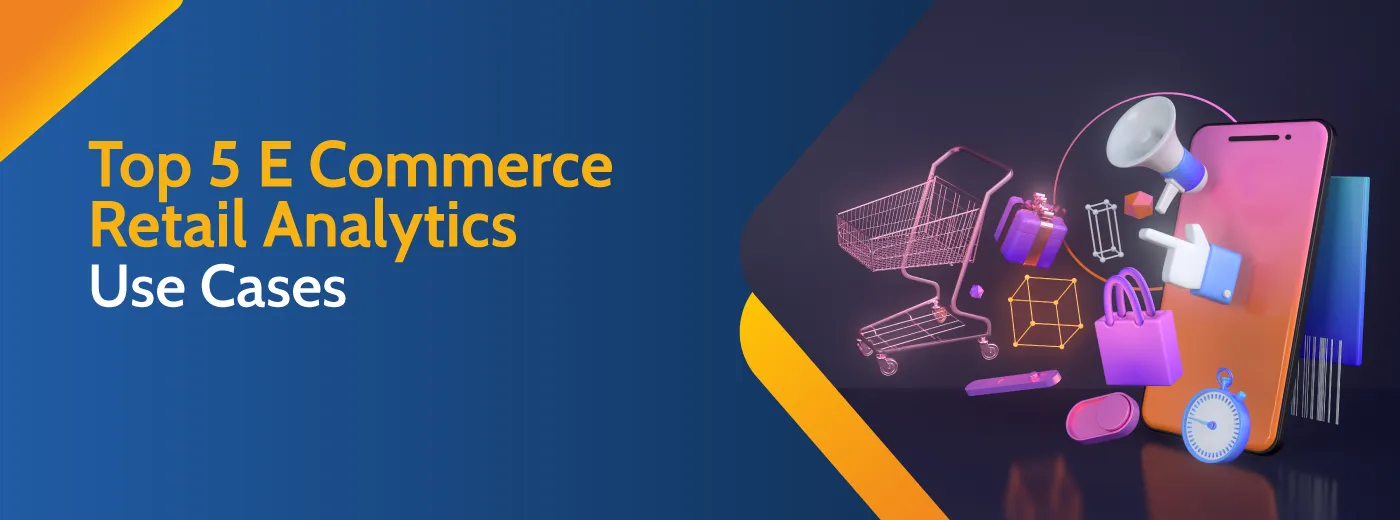
Sign up to receive latest insights & updates in technology, AI & data analytics, data science, & innovations from Polestar Analytics.
Editor's Note: With the retail landscape increasingly moving towards omnichannel, it is important to analyze the trends and find correlations between the data to have a holistic view and form a detailed strategy. In this blog we talk about retail analytics use cases from sales analytics to trade promotion effectiveness, keep reading to know how retailers can leverage analytics.
The retail landscape has undergone a change unmatched in the recent past. This change has brought about a number of challenges and opportunities for retailers ranging from complex customer behaviour and stiff competition to newer retail channels like e-commerce and the latest one Q-commerce.
In this complex retail landscape, a static, one-time carved strategy is not enough. The strategy, plans, and execution needs to be agile and evolving based on customers or rather market sentiments. That’s where retail analytics comes into the picture.
Retail analytics, including online retail analytics, is the collection of all the retail business information, digitizing it if needed, to put it through the analytics engines. Now, what are the different sources of data? It is the data contained in cash registers, point-of-sale devices, ERP, sourcing and inventory data, pricing and discounts, financial ledgers, and so on.
Retail analytics feeds on this information to generate insights to make the right decisions, uncover answers to hidden questions, identify bottlenecks in your retail business, and further assist in better planning and preparedness.
Here’s a retail analytics reference architecture:
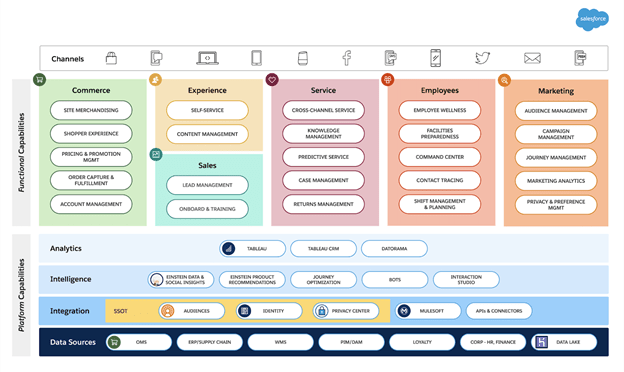
Source: Salesforce
Note: It’s a reference architecture and the tech-stack can be changed.
The customer’s attention span has gone down while they are bombarded with a flood of information from social media, ads spaces, chats and messages, emails, and so on. New age retail is all about cutting through all the noise and reaching their customers and capturing their attention by providing a unique & personalised experience.
Leading retailers are creating unprecedented business value & competitive edge by investing heavily in technology solutions like retail analytics, Cloud computing, and customer experience (CX) management. With this Technology-driven evolution in retail, these companies are constantly listening to what customers want, how they are reacting to new product launches, and what the competition is doing.
With all this information, analytics in retail follows naturally. It gives them the insights to be rightly positioned for the next wave of transformation in the retail industry. These insights are empowering key decision-makers at different levels in the retail value chain to formulate an optimum strategy for their business along with monitoring & changing them if needed.
Here’s a pictorial representation of the retail value chain:
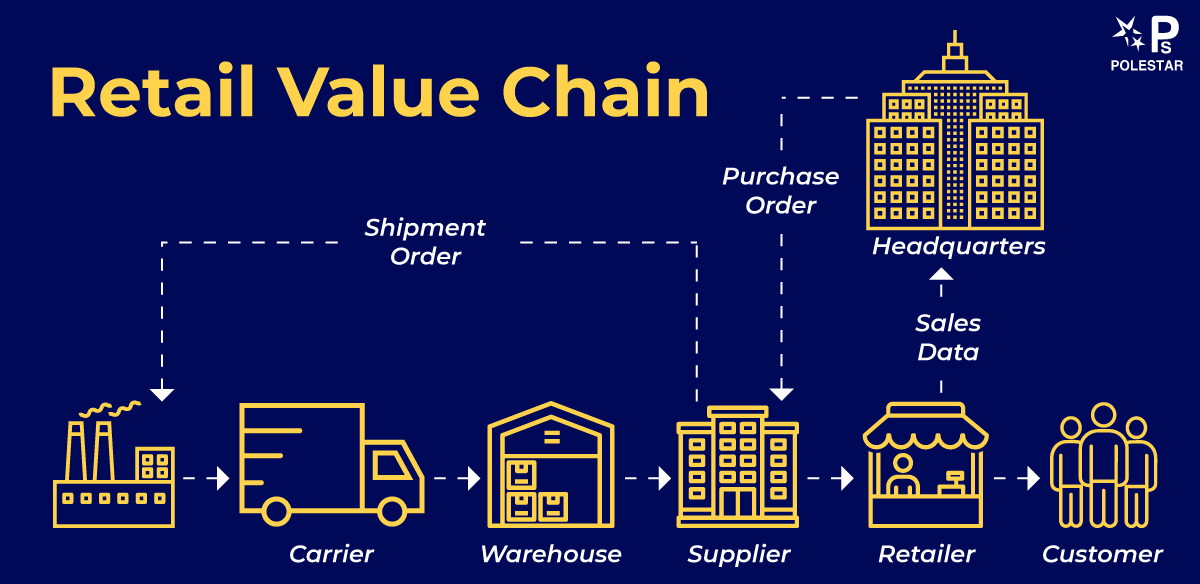
The use of retail analytics to analyse sales performance and optimise processes is very critical for any business. With the help of a Business Intelligence platform, a company can dive deeper into the retail sales data, analyse patterns & correlations & identify outliers through visually appealing & intuitive retail dashboards. These tools offer the following retail analytics use cases pertaining to the sales function:
The retail analytics process starts with collating all the retail sales data, be it ERP, cash registers, point-of-sales transitions and so on, thus helping break the data silos prevalent in a retail business and accumulates all of it in a single repository be it a data warehouse or a data lake. The analysis of all these sales-specific data, also termed as ‘Sales Analysis’ draws a complete picture of every transaction like mode of purchase, payment details, customer demographics information, discount coupon/promotional offer applied, return queries and refund status.
Sales Personnel/ store Performance & Profitability Analysis gives insights into how each salesperson or a store is performing vis-a-vis their peers or other stores in the territory. A retailer can drill down into these Business Intelligence (BI) dashboards to get insights on area/category/product-wise sales performance, map it with the respective sales personnel & identify improvement opportunities to enhance profitability. Using these insights, retailers can manage both the sales force performance as well as their overall profitability.
Losing a sales opportunity because of stock-outs not just hurts the retailers’ sales but also the buyers’ experience takes a beating. A retail analytics system could project sales of different items based on past trends and minimise the opportunity cost. There are some very comprehensive ‘Demand Forecasting Models’ adopted by leading retailers that factor into multiple drivers of change. These systems can model scenarios by changing the variables and enable retail decision-makers to choose the best course of action. It even helps with effective sales goal setting, Incentive and compensation planning for the sales team.
These analytical systems are intelligent enough to re-adjust and highlight changes that might creep in due to any external or internal factors. This is key as the retail landscape is prone to seasonality, demand fluctuation due to any running sales or marketing campaigns, any Sales Promotion schemes or any competitor’s activity that can impact sales. These insights help retailers in stocking the inventory accordingly.
Market Basket Analysis uncovers associations between items; it may be because these are complementary products or have a tendency to be bought together. With the help of these insights, the store owners can create a tailored assortment of products and play with the margins by clubbing expensive (high margin) items with less selling discounted items. A correlation between the number of users in a family and identifying cross-sell & up-sell opportunities is key to driving sales.
Identifying customers’ and competitors’ trends is very crucial for retailers. It requires analysis of a huge set of data and having a robust retail data analytics platform boosts the efficiency in planning and rolling out these promotional activities.
The digital spends are always rising and the COVID-19 has disrupted the spends across other channels and we see consolidation into digital spends primarily for the consumer brands.
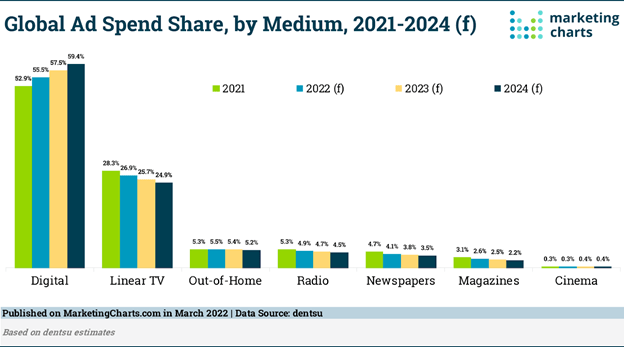
All this has been made possible as the consumers are leaving information through multiple touchpoints before the actual transaction happens. These different touchpoints enable marketers to develop a more detailed customer persona and interpret what customers want. Customer Analytics allows retailers & e-commerce players to push out relevant offers to each customer at every stage of their buyer’s journey.
Retailers can use ‘What-if analysis for costs’ and ‘Analysis of purchase decisions’ to stay relevant in this competitive retail landscape. Use of a regression model to understand how to store/platform sales correlate with a retail event provides insight into the effectiveness of these events/campaigns.
Price Elasticity Analysis can help retailers develop an understanding of the impact on an item’s sales for per unit change in prices (price elasticity). The low-price elasticity products provide a bundling opportunity with slow-selling high cost (impulse) purchases. These systems ensure that an insight-driven methodology gets adopted while making pricing decisions across the products and the store outlets/websites.
With ‘User behaviour analysis’ an e-commerce player can adopt a targeted approach based on user behaviour (number of checkouts as compared to cart abandonment) and preferences (conversion through a well-directed discount on the items in carts).
It favours a more holistic strategy as it not only takes care of sales volume but also enables a check on the sales margin and reduces the customer acquisition cost.
Promotion Channel Analysis can help gain insights on the channels that are working in favour of the retailer. A prioritised advertisement and promotional spend on the favourable channels would help improve the ROI by reducing the overall spend.
The importance of strategic supply chain planning to deal with a crisis/shortage situation is ever-increasing for ensuring a seamless experience for the customers. With omnichannel strategy fuelling retail, an agile supply chain that can deliver products within hours of purchase and nimble reverse supply chains that allow flexible returns is the need of the hour. It requires building a trustworthy supplier network.
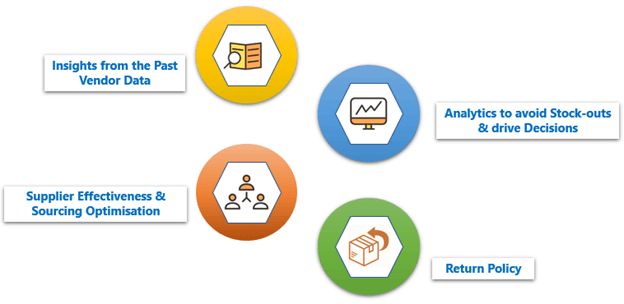
With retail analytics systems, retailers/e-commerce decision-makers can create a repeatable framework for Unbiased Vendor Evaluation. For example, the decision-makers can create a vendor evaluation scorecard against some crucial aspects like Cost-Margin, Lead Time, Credit Rating, Distribution Network and other hygiene factors.
The housed Business Intelligence (BI) systems can gauge the Supplier effectiveness vis-a-vis the Key metrics identified by the retailer. It can flag off if inventories from a supplier are failing to meet a specified standard or his return policies are hurting the customer experience in case of e-commerce.
Inventory Optimisation is another use case of Forecasting Systems. These systems develop robust demand forecasts through a statistical analysis of data across outlets. Through these BI systems, a retailer can keep a check on SKUs across outlets. Combining Procurement analytics with supplier effectiveness can help retailers in taking optimum inventory sourcing decisions.
These days it’s essential for companies to listen to what customers want. The supply chain is ‘pulled’ by the customer's demand rather than the traditional ‘push’ strategy driving the trends.
Retailers can use ‘Sentiment Analysis’ to capture this demand and accordingly plan the product pipeline in collaboration with their suppliers. It uses text analytics to draw insights from social media conversations consumers are indulging in.
Analytics is also very crucial to analyse the success factors driving a product’s sale. A benchmarking of these factors could go a long way in building a successful new product strategy. Assessing the impact of cannibalization through ‘Scenario Analysis’ is also a very crucial step before a new launch. These modules can help retailers to limit or expedite the investment in a new product launch.
Another very crucial element before a product launch is ‘Competitors’ Analysis’. These Business Analytics tools are capable enough to analyse if a competitor enjoys some unique advantage or has some gap in their product portfolio. Also, a BI system can draw insights from the impact analysis of the competitors’ pricing & promotion events.
Set up an e-commerce or retail analytics assessment workshop with our experts who have a track record of infusing technology-led transformation for multiple complex multinational enterprises as well-age startups to optimise business planning & decision making
Heatmaps Improve website/store layout: Heatmaps are another very crucial feature of these BI tools. These maps are a lot more visual, which can make them easier to analyse at a glance. These maps draw a gradient on website UI or store layout, the darker spaces represent higher traffic while lighter shades showing lesser traffic.
With the help of these tools, the decision-makers could gauge the behaviour of their existing customers and make optimum business decisions. For example, an e-commerce player can observe what is appealing to his/her customer or from where he/she is bouncing off. What works for a business/product may not work for others. So, e-commerce players can use this information to formulate a standardised strategy for their business.
They can analyse the areas from where users are bouncing off, understand why it is happening (some technical issue or some designing flaws) & most importantly A/B test what is working for them.
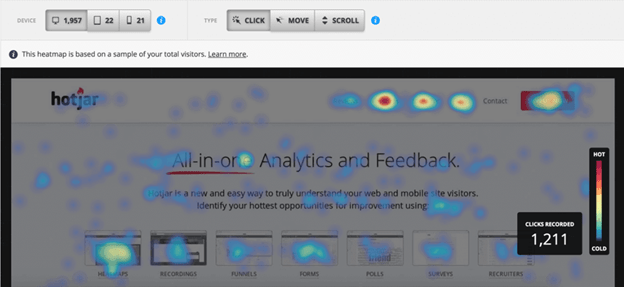
Like website optimization for e-commerce players, a store layout is critical for a brick-mortar store. The store owners never analyse the floor layout critically. They can deploy heatmaps to depict hot and cold zones across the store. This way, they can get a peek into how their customers are exploring their stores. Based on it, they can drive their strategy of assigning shelf space or putting promotional banners accordingly.
Recommendation Engine: Capture the Customer Mind Share Recommendation engines are proving out to be ground-breaking for online sales. These engines are a classic case of machine learning. It observes user behaviour over time and displays ads and promotions to a buyer pertinent to his past explorations.
Fraud Detection: Avoid bad User Experience Deep neural networks find its application in fraud detection. These are highly efficient at not only identifying fraudulent behaviour and flagging it but also in predicting fraud in advance. Incidents like a fraud in return or delivery, the abuse of rights & credit risk significantly harm the retailer’s reputation, predictive neural networks can safeguard against such incidents.
Customer Lifetime Value Analytics: Another crucial aspect for retailers is ‘Customer Lifetime Value’. They often spend a lot on customer acquisition and that customers might churn out. The ‘CLV modules’ consider the user behaviour starting from his first transaction data leading up to the most recent one.
These processes also spot any interdependencies (relevant offers or bad experience) that impact customer behaviour. These models (with data science & machine learning) then suggest to retailers the improvements required in services and priorities related to any customer.
The power of these insights is immense to enhance the end-user experience. Polestar Analytics can help you implement these systems in your retail environment (physical as well as digital space). We have developed these capabilities for some big e-commerce & retail clients with our expertise in understanding their problems and deploying suitable analytics systems that enable business decision-making.
About Author

Assistant Vice President
You can't hire somebody else to do your pushups for you.